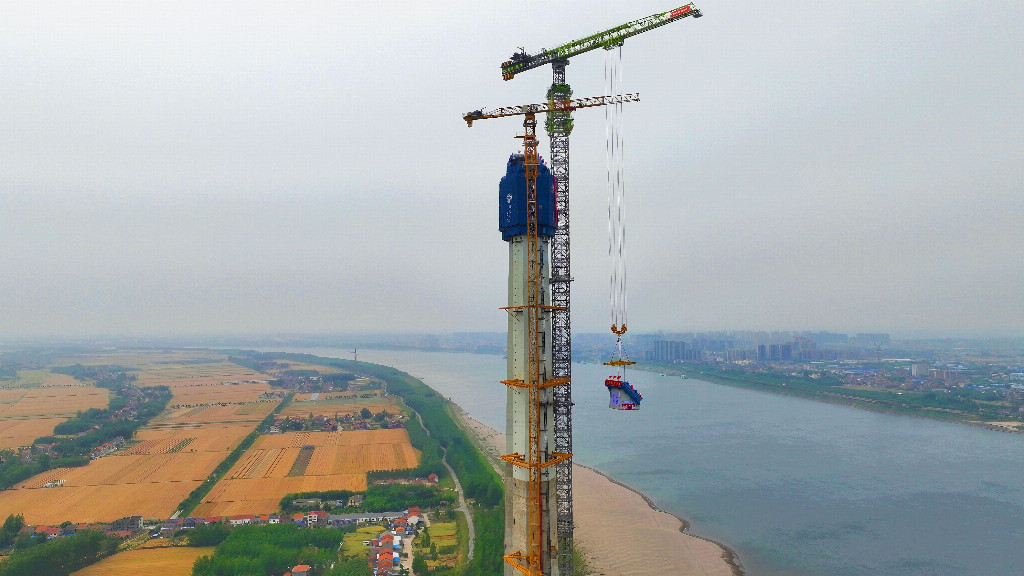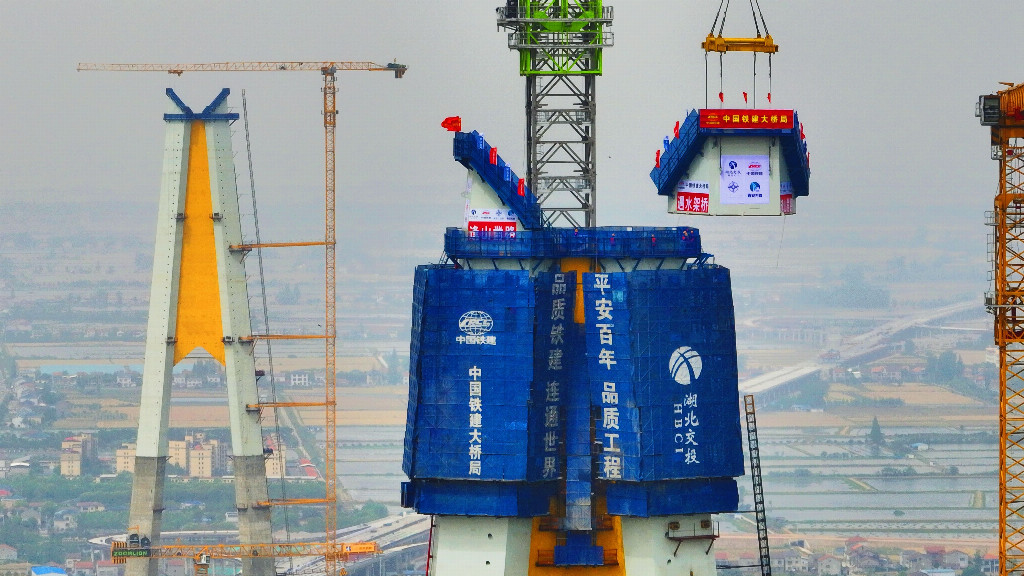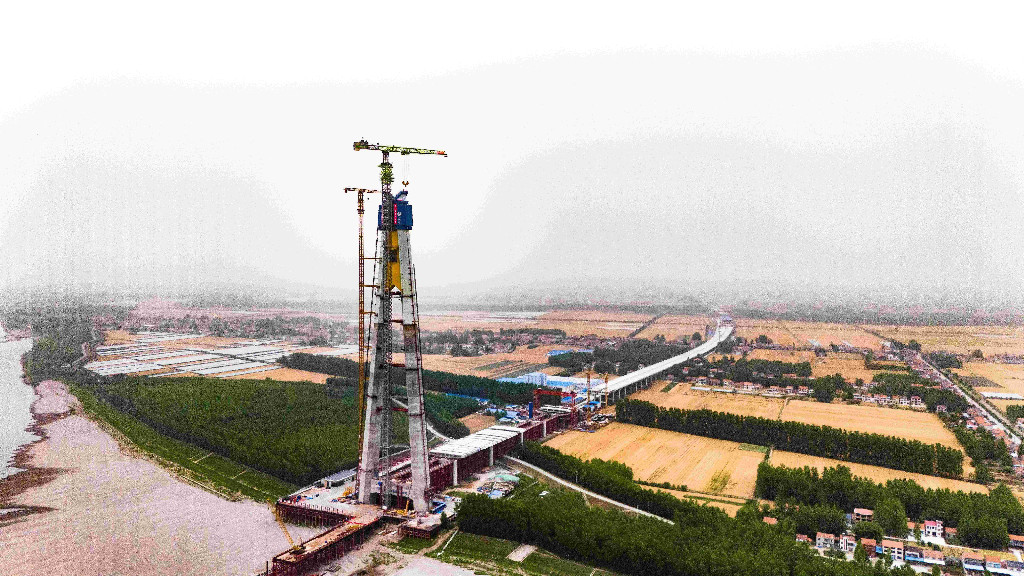World's Longest-Span Rd Cable-Stayed Guanyinsi Yangtze Bridge N Main Tower Topped Out
On May 6, the north main tower of the Guanyinsi Yangtze River Bridge—the world's longest-span road cable-stayed bridge—constructed by China Railway Construction Bridge Engineering Bureau was successfully topped out, marking the full entry into girder erection and stay-cable construction phases.

As a key control project of the Wusong Expressway, the bridge's main bridge spans 1,860 meters with a central span of 1,160 meters. The 262-meter-tall north main tower, shaped like an "A" with a large-chamfer diamond hexagonal cross-section, adopts a hybrid composite structure: the lower and middle 155 meters are made of reinforced concrete, while the upper 107 meters use steel-shell concrete. This design significantly enhances the tower's compressive strength and crack resistance.

The tower construction site, only 105 meters from the Yangtze River embankment, faced challenges such as dense deep pebble layers with insufficient bearing capacity and limited riverside working space, making traditional construction methods ineffective. The project team first applied post-grouting technology to deep pebble strata, precisely controlling grouting parameters to greatly improve the side friction resistance and end bearing capacity of bored piles. During the Yangtze's low-water period, they used seven ZJD-4000 air-lift reverse circulation drills to successfully complete 44 of the world's largest friction pile foundations—each 3.2 meters in diameter and nearly 100 meters deep.

For the complex prefabrication of thousands of steel bars, the team developed a "rapid centroid calculation program for complex steel components," determining the overall centroid of all steel bars within 3 minutes. Using Hubei's largest-tonnage tower crane, the R4300-200, they hoisted the entire steel components as a whole, ensuring stable lifting in the air. Through process innovations such as "segmented prefabrication on jigs, integral hoisting by tower crane, and cone-sleeve locking connection," high-risk operations on the tower were transformed into ground-level work, improving construction efficiency, steel bar alignment accuracy, and the bridge's standardized construction level. For tower alignment control, the technical team used an intelligent hydraulic climbing formwork system, reasonably planning formwork joint layouts according to the tower's sectional inclination and continuously optimizing the formwork structure to ensure smooth joint lines. For controlling the installation precision of steel shell segments, the team modified the original hydraulic climbing formwork system, using climbing frames as high-altitude operation platforms and installing positioning fittings and guide plates between segments to achieve millimeter-level construction precision.
Driven by technology, smart construction was implemented: the project team created immersive management scenarios using MR interactive sand tables and holographic projection technology to digitally present all engineering elements. The information management platform deeply integrated key modules such as an intelligent concrete delivery system, a digital steel processing center, an environmental intelligent monitoring system, and a modern beam factory, forming a smart control network covering all elements of "man, machine, material, method, and environment." The intelligent tower crane monitoring system real-time collects and analyzes various operation parameters, automatically alerting on-site safety officers and engineers via mobile terminals to promptly investigate anomalies, paired with tower-top cameras for 24-hour visual monitoring of tower construction. The intelligent hydraulic climbing formwork system meets the needs of construction operations, equipment storage, and safety protection, while integrating a smart temperature-control curing system that uses automatic spray cooling in summer and intelligent steam curing in winter to effectively control the temperature of mass concrete and improve concrete pouring quality.
The Guanyinsi Yangtze River Bridge is scheduled for closure in the second half of 2026. Upon completion, it will play a significant role in advancing China's transportation power strategy, improving the backbone road network of the Yangtze Economic Belt, optimizing Hubei's expressway network layout, supporting Hubei's regional development strategy of "one main city leading, two wings driving, and overall regional coordination," strengthening connections between the Wuhan city cluster and mid-Yangtze urban agglomerations, leveraging local resource advantages along the route, and promoting industrial collaboration in the Jingzhou area.
- The project in Zengcheng, Guangzhou is progressing smoothly.
- Using Router as DHCP Server: How to Configure
- Galaxy Macau Unveils World’s Largest Bentley Flying Spur Mulliner Fleet, Elevating Guest Experiences to New Levels of Luxury
- 2025 Floral Wisper Along the Silk Road:
- 70th main tower of Shenjiang Railway's Modaomen Waterway Bridge successfully top
- Nanfan Silicon Valley" in south China's Hainan Province, February 23. 2022.











